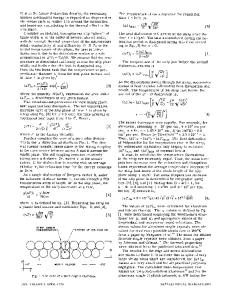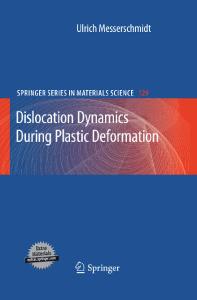Microstructural refinement and deformation twinning during severe plastic deformation of 316L stainless steel at high te
- PDF / 1,811,688 Bytes
- 11 Pages / 612 x 792 pts (letter) Page_size
- 44 Downloads / 453 Views
Z.P. Luo Microscopy and Imaging Center, Texas A&M University, College Station, Texas 77843
H.J. Maier Lehrstuhl für Werkstoffkunde, University of Paderborn, 33095 Paderborn, Germany
Y.I. Chumlyakov Siberian Physical-Technical Institute, Tomsk, 634050, Russia (Received 16 December 2003; accepted 30 March 2004)
The present work focuses on the severe plastic deformation and deformation twinning of 316L austenitic stainless steel deformed at high temperatures (700 and 800 °C) using equal channel angular extrusion (ECAE). Very high tensile and compressive strength levels were obtained after ECAE without sacrificing toughness with relation to microstructural refinement and deformation twinning. The occurrence of deformation twinning at such high temperatures was attributed to the effect of high stress levels on the partial dislocation separation, i.e., effective stacking fault energy. High stress levels were ascribed to the combined effect of dynamic strain aging, high strain levels (⑀ ∼ 1.16) and relatively high strain rate (2 s−1). At 800 °C, dynamic recovery and recrystallization took place locally leading to grains with fewer dislocation density and recrystallized grains, which in turn led to lower room temperature flow strengths than those from the samples processed at 700 °C but higher strain hardening rates. Apparent tension-compression asymmetry in the 700 °C sample was found to be the consequence of the directional internal stresses.
I. INTRODUCTION
Austenitic stainless steels are used in a broad range of industrial applications mainly because of their excellent corrosion resistance. However, their low yield strength often is a major drawback. As demonstrated in the present paper, severe plastic deformation (SPD) processes such as equal channel angular extrusion (ECAE) can result in high yield strength material without sacrificing the high toughness. High work hardening is another typical feature of stainless steel. The unusual work hardening is obtained not only because of the interaction of dislocations but also due to the presence of stacking faults and in certain cases, thin deformation twins, and their interaction with slip, common to low stacking fault energy (SFE) materials.1–9 In contrast to high SFE materials,
a)
Address all correspondence to this author. e-mail: [email protected] DOI: 10.1557/JMR.2004.0289 2268
http://journals.cambridge.org
J. Mater. Res., Vol. 19, No. 8, Aug 2004 Downloaded: 22 Jan 2015
where cross-slip is readily observed and random dislocation networks are formed, linear dislocation arrays and stacking faults are observed in low SFE materials. Typical deformation mechanisms in austenitic steels start with plastic deformation by slip at early stages and continue with the formation of extensive stacking faults. At higher strains, multiple slip occurs until the stage where twinning becomes the dominant deformation mechanism before strain instability.10 Usually the onset of twinning in low SFE single crystals coincides with where crossslip starts in high SFE materials,6,
Data Loading...











